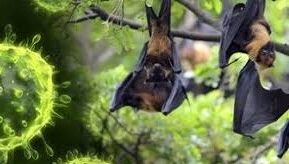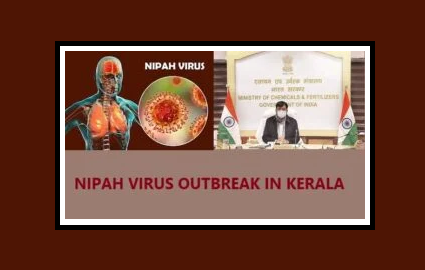Nipah Virus Alert in Kerala:
The Nipah virus has once again raised concerns in Kerala, India, following two recent deaths in Kozhikode. This article provides an overview of the current situation, containment measures, historical outbreaks, and symptoms associated with the Nipah virus.
Kerala is on high alert as Nipah virus cases emerge. The alert has now extended to four districts: Kozhikode, Kannur, Wayanad, and Malappuram. In these areas, seven gram panchayats have been designated as containment zones, and wearing masks is mandatory.
Containment Measures:
The Kozhikode District Officer has taken several precautionary measures, including the closure of educational institutes, Anganwadi centers, banks, and government institutions in the affected panchayats. Only shops selling essential goods and medicines are permitted to open from 7 am to 5 pm.

As of now, Kerala has reported four cases of the Nipah virus, with two fatalities. The victims include a 9-year-old child and a young adult. Contact tracing efforts are ongoing, and local health workers are maintaining strict vigilance in their respective areas.
Response and Investigations:
The National Institute of Virology (NIV) from Pune has been dispatched to Kerala to investigate the Nipah virus outbreak. Additionally, the NIV team will conduct a survey of bats at Kozhikode Medical College. The Indian Council of Medical Research (ICMR) has assured the availability of monoclonal antibodies for patient treatment in private hospitals.
Kerala’s Health Minister, Veena George, held an emergency meeting with MLAs, district officials, and public representatives to discuss necessary measures to combat the virus. The government is taking the situation seriously, but an official Nipah outbreak has not been declared.
Historical Nipah Outbreaks:
This is not the first encounter with the Nipah virus in Kerala. In 2018, Kozhikode and Malappuram districts saw 17 deaths due to Nipah. Subsequently, in 2019, a case was reported in Kochi, and in 2021, another case emerged in Kozhikode.
Nipah Virus Origins:
The Nipah virus is zoonotic, meaning it can spread from animals to humans. Bats and pigs are common carriers of the virus. Unfortunately, there is no specific treatment or vaccine available for Nipah, and it has a high mortality rate.

Symptoms of Nipah Virus:
Nipah virus can be transmitted from animals to humans and between humans. Symptoms include viral fever, headache, nausea, difficulty in breathing, and dizziness. If these symptoms persist for 1-2 weeks, medical attention should be sought.
Key Facts:
- Its infections in humans can manifest in various ways, ranging from no symptoms at all to severe respiratory issues and fatal encephalitis.
- The case fatality rate for this virus infections can be as high as 40% to 75%, with variations depending on local healthcare capabilities.
- Its virus can be transmitted to humans through contact with animals like bats or pigs, contaminated foods, and even direct human-to-human transmission.
- Fruit bats belonging to the Pteropodidae family serve as the natural host for the this virus.
- Currently, there is neither a treatment nor a vaccine available for Nipah virus infections in humans or animals, making supportive care the primary mode of treatment.
- The WHO’s 2018 annual review of priority diseases highlights the urgent need for accelerated research and development efforts to combat with it.

Historical Significance:
The Nipah virus was first detected in Malaysia in 1998, in a village called Sungai Nipah, from which it derives its name. The initial cases were observed in pig rearing farmers, but infections also spread through other pets like dogs, cats, goats, and horses. Subsequently, Nipah cases were reported in Singapore, Bangladesh, and the Indian border with Bangladesh.
Conclusion:
The Nipah virus alert in Kerala highlights the importance of swift response and containment measures to prevent further spread of the disease. It serves as a reminder of the ongoing threat posed by zoonotic viruses and the need for continued vigilance in public health.
Highlights of Nipah Virus Alert in Kerala:
- “Containment Zones and Mask Mandates in Place.”
- “2 Deaths and 4 Cases Reported So Far.”
- “Historical Nipah Outbreaks in Kerala.”
- “Its Origins Linked to Bats and Pigs.”
- “Symptoms and Response Measures Discussed.”
- “Government Takes Action, NIV Team Investigates.”
- “No Official Nipah Outbreak Declaration Yet.”
- “High Mortality Rate Raises Concerns.”
- “Kerala Faces a Renewed Nipah Threat.”
Image Courtesy: Google
For more related news – https://universenews.co.in/

